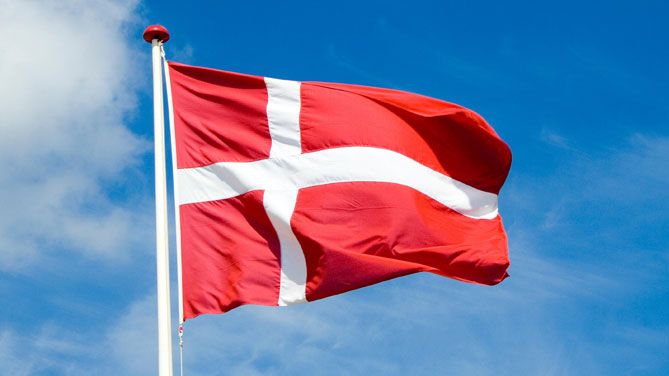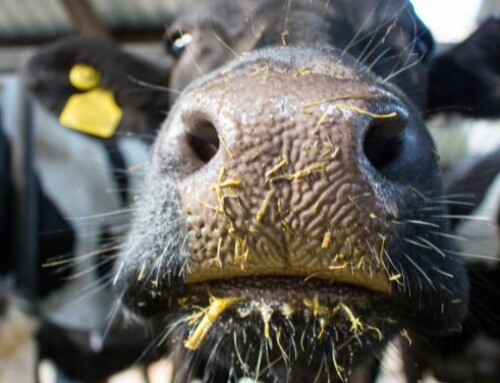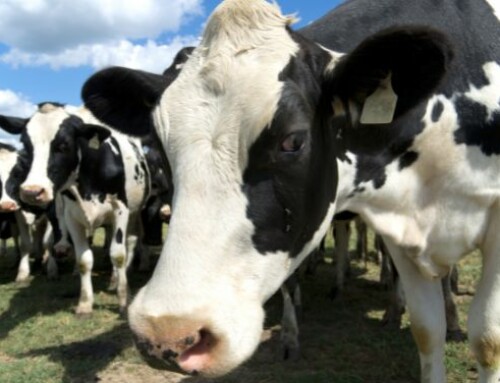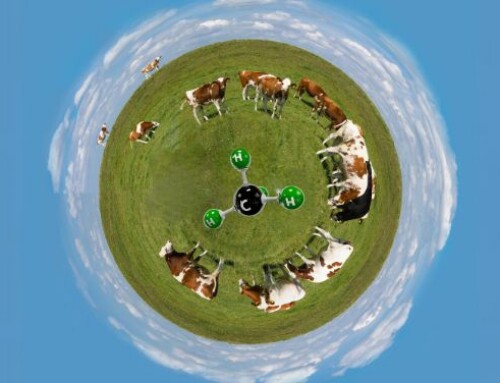La produzione di latte è sempre stata una parte importante dell’agricoltura in Danimarca, e l’esportazione di prodotti lattiero-caseari una parte importante del nostro export agricolo. Oggi approssimativamente 2/3 del latte prodotto in Danimarca viene esportato, principalmente come formaggi e anche come burro e vari prodotti in polvere sono importanti prodotti di esportazione. Principalmente esportiamo in UE, ma la Danimarca ha esportazioni in tutto il mondo a causa dell’alta qualità del prodotto e per gli elevati standard veterinari e di igiene.
La maggior parte degli allevamenti sono di vacche Holstein, anche se il 10-15% sono di Jersey e il 5% di vacche Rosse danesi.
La Danimarca è, ed è sempre stata, la terra delle cooperative. Ciò significa che gli agricoltori danesi possiedono di gran lunga la maggior parte dei caseifici, macelli e aziende di alimentazione a servizio del settore agricolo in Danimarca. Servizi di consulenza per l’allevamento, la gestione della mandria e la nutrizione sono principalmente forniti da consulenti che sono impiegati dalle stesse associazioni di agricoltori. Di conseguenza questi servizi sono usati a diversi livelli da quasi tutti i produttori di latte. I veterinari, tuttavia, operano come società, che di solito impiegano 5-10 veterinari ciascuna. Essi offrono il trattamento degli animali malati così come il servizio di consulenza. Questo tipo di prestazione professionale in materia di salute e riproduzione è diventata di grande importanza per l’attività dei professionisti bovini.
La legislazione per il trattamento delle malattie d’allevamento è stata per molti anni molto severa in Scandinavia rispetto alla maggior parte degli altri paesi.
Questo ha portato a forti limitazioni nei trattamenti farmacologici agli animali da reddito. In aggiunta i trattamenti e le malattie devono essere registrati in una banca dati centrale. Questo permette, tra le altre cose, di vedere la diffusione nell’uso degli antibiotici, ma permette anche all’allevatore e ai suoi consulenti di determinare quali sfide per la salute una mandria specifica si trova ad affrontare. Oltre alle registrazioni da parte del gestore della mandria, i veterinari e l’associazione per la registrazione del latte, trovate anche le registrazioni dei macelli, dell’associazione dell’allevamento e dei podologi in questo database centrale del bestiame. Così, questo data base è la principale fonte di informazioni per la squadra che lavora all’ottimizzazione della produzione in un particolare allevamento e sulla base di questo database possono essere fatte relazioni molto dettagliate !.
Ad oggi ad un produttore di latte danese è consentito di effettuare diversi trattamenti antibiotici (e altri trattamenti) se ha un contratto di consulenza stipulato con il suo veterinario. L’accordo comprende visite durante le quali le strategie dell’allevamento sono costantemente monitorate e valutate e dove le registrazioni di tutti i trattamenti nel registro centrale vengono aggiornate e controllate. La frequenza delle visite, dipende dalle dimensioni mandria da settimanale per gli allevamenti più grandi a mensile per quelli più piccoli.
Durante gli ultimi anni allevatori danesi hanno avuto successo nel ridurre la conta delle cellule somatiche e allo stesso tempo l’uso di antibiotici. Il conteggio medio di cellule somatiche si sta avvicinando rapidamente a 200.000 SCC / ml (207.000 SCC / ml nel 2014). L’uso di antibiotici è diminuito nel corso degli ultimi anni, sono stati fatti accordi per abbandonare l’uso di antibiotici di 2a e 3a generazione e di recente si è deciso di abbandonare l’uso di cefalosporine per il trattamento delle mastiti a meno che non sia stata verificata resistenza in un laboratorio. In generale, un minor numero di vacche sono ora trattate durante l’allattamento, mentre più del 30% di tutte le vacche sono trattate prima di essere asciugate, sempre sulla base di analisi di un campione di latte per determinare l’infezione. A questo scopo le analisi PCR del latte prima dell’asciugamento sono diventate molto popolari ma è anche largamente usata la coltura tradizionale. Esistono in Danimarca consulenti di aziende di alimentazione e di altre fonti commerciali che non sono però ancora riusciti a conquistare una posizione di forza sul mercato.
Anni fa i servizi delle associazioni di allevatori e per la registrazione ufficiale del latte sono stati sovvenzionati, ma per più di 30 anni la registrazione del latte è stata finanziata al 100% solo dagli utenti, e per quasi 20 anni non ci sono stati sussidi neanche per i servizi di consulenza. Così, anche senza il sostegno governativo, i consulenti per l’allevamento e la nutrizione sono riusciti a mantenere la loro posizione di leader e sono oggi pagati dagli agricoltori per i loro servizi su base commerciale al 100%.
Milk production in Denmark and the organization behind.
Milk production has always been an important part of agriculture in Denmark, and export of milk products an important part of our agricultural export. Today approx. 2/3 of the milk produced in Denmark is exported, mainly as cheese but also butter and various powder products are important export products. The majority we export to EU, but Denmark do have worldwide export due to high product quality and due to the high veterinarian and hygiene standards.
By far most of the herds are Holstein cows, though 10-15% of the herds are Jersey and 5% are Danish Red Cows.
Denmark is, – and has always been, the land of cooperatives. This mean that Danish farmers own by far most of the dairies, slaughterhouses and feeding companies servicing the agricultural sector in Denmark. Advisory services for breeding, herd management and nutrition is mainly purchased from advisors who are employed by the farmers’ own farmer associations. As a consequence these services are to various extend used by almost all dairy farmers. The veterinarians, however, work out from private veterinarian companies, usually employing 5-10 veterinarians each. They offer treatment of sick animals as well as advisory service and today advisory service on health and reproduction has become of major importance for the business of bovine practitioners.
Legislation for disease treatment of husbandry has for many years been very strict in Scandinavia compared to most other countries. This has resulted in strong limitations for which treatment regimens can be used. In addition treatments and diseases must be registered in a central database. This allow, among other things, to see the development in the use of antibiotics, – but it also allow the farmer and his advisors to determine which health challenges a specific herd is facing. On top of registrations by the herd manager, the veterinarians and the milk recording association, you also find registrations from the slaughterhouses, from the breeding association and from the hoof trimmers in this central cattle database. So, this data base is the major source of information for the crew working on optimizing the production in a particular herd and very detailed reports can be made based on this database!.
Today a Danish dairy farmer is allowed to carry out various antibiotic treatments (and other treatments) if he has a signed consultancy agreement with his veterinarian. This agreement includes visits where the strategies in the herd constantly are monitored and evaluated and where registration of all treatments in the central register is updated and checked. The frequency of the visits, depend on the herd size from weekly (bigger herds) to monthly (small herds).
Over the last years Danish dairy farmers have been successful in reducing the somatic cell count at the same time as they have reduced the use of antibiotics. The average somatic cell count is rapidly approaching 200.000 scc/ml (207.000 scc/ml in 2014). The use of antibiotics has decreased over the last years and agreements have been made to abandon the use of 2nd and 3rd generation antibiotics and recently it was agreed to abandon the use of cephalosporines for mastitis treatment unless resistance has been verified in a lab. In general, fewer cows are now treated during lactation whereas more than 30% of all cows today are treated before being dryed off, – always based on analyses of a milk sample to determine the infection. For this purpose PCR analyses of milk before dry-off has become very popular but traditional culturing is widely used too.
Advisors from feeding companies and other commercial sources do exist in Denmark, however they have not yet managed to gain a strong position in the market.
Years back the services from the farmers associations and for official milk recording were subsidized but for more than 30 years the milk recording has been 100% financed by the users only, and for almost 20 years now there has not been subsidies for the advisory service either. So even without governmental support the advisors for breeding and nutrition have managed to maintain their leading position and are today paid by the farmers for their services on a 100% commercial basis.









Scrivi un commento
Devi accedere, per commentare.